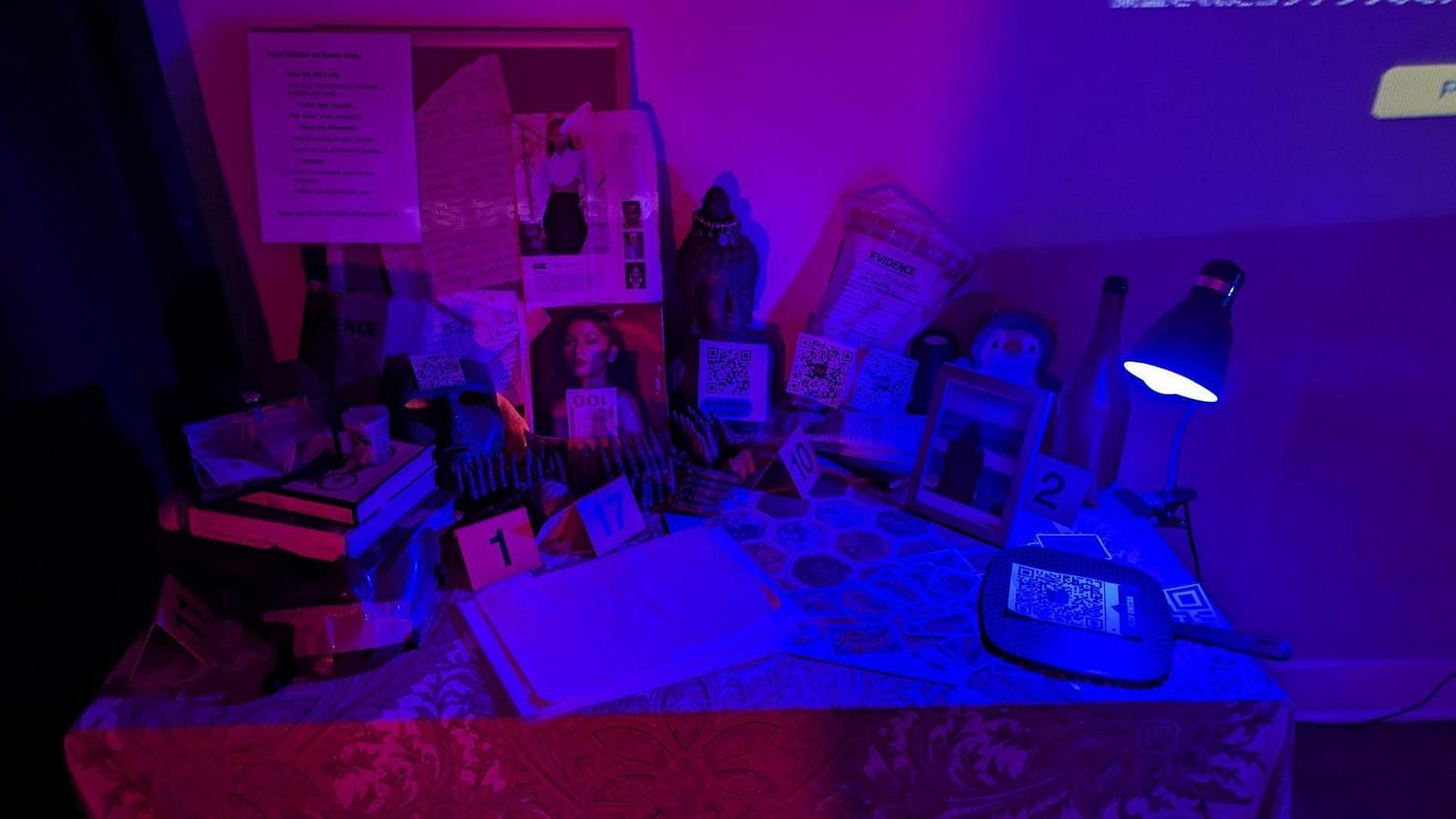THE SEVEN DEADLY SINS
Near Los Globos
Through April 14, 2024
I have asked immersive audiences many times what they felt just before an immersive experience begins. There are only two answers I have ever received: leaving the comfortable safety of traditional theater provokes either excitement or anxiety for the possibilities ahead. Standing outside Los Globos in Silver Lake, I felt the tingling that identifies me as a member of the first group. For the next hour, almost anything could happen. As I waited, I became a detective, searching for a way into this new, strange world. The quiet and reserved individual who suddenly appeared beside me and asked my name caught me by surprise. As he led me forward to a secret location nearby, I awaited the moment that brings me back time and again to immersive experiences: when what is possible becomes real.
BLCK UNICRN has launched a show titled The Seven Deadly Sins: An Existential Crisis, billed as a combination escape room, musical performance, and cinematic experience. It fuses media,technology, and live interaction to explore the life of a soulless man and the apps that controlled his existence. In the scenario, Roy Midas is a wealthy venture capitalist who recognized that social media taps into the classic seven deadly sins (the sloth of binge-watching, for instance). Midas intentionally invested in these companies because he knew he could count on humanity to commit these sins constantly and he could generate unimaginable wealth through their actions. A video projected on the wall of the home relates this history through a combination of live and animated images punctuated by the hiss of static foreshadowing the chaos to come.
The audience learns that Midas is missing and possibly dead. He had begun to question the ethics behind his fortune, a worry that animates the rest of the experience. The introductory narrative video transforms into a music video as the original guide returns as personification of Midas’s conscience, a rapper whose lyrics guide us through Midas’s mind as he pulls audience members out of their seats to explore Midas’s home. Items such as his first gold necklace and his dozens of old computer discs are scatted across the house, showing what he felt important enough to hoard. Scattered QR codes provide internal company documents that detail his motivations and his schemes. Every few minutes, the surroundings in the show alter, revealing new videos, new interactions, and new combinations of cast members. Audience members can even tour the house on an Oculus Rift headset.
The experience isn’t always perfect; technological malfunctions creep in. There is too much backstory, which rushes some of the narrative moments. And yet, this chaos becomes cathartic. We live in a world that scarcely gives us time to breathe, pushing us onward so relentlessly that it becomes difficult to reflect — much less comment — on it. But here is a show that encourages us to face technological and social dangers head-on, and even to connect these dangers to our own worst impulses. Despite its shortcomings, I’ve found myself returning to the documents that I downloaded throughout the show. While the show is fictional, the connections between social media and “sinful” behavior feel uncomfortably real. Instead of giving in to my vanity and posting yet again on Instagram, I have an unshakable desire to confess my sins and cancel all my social media subscriptions as penance.






